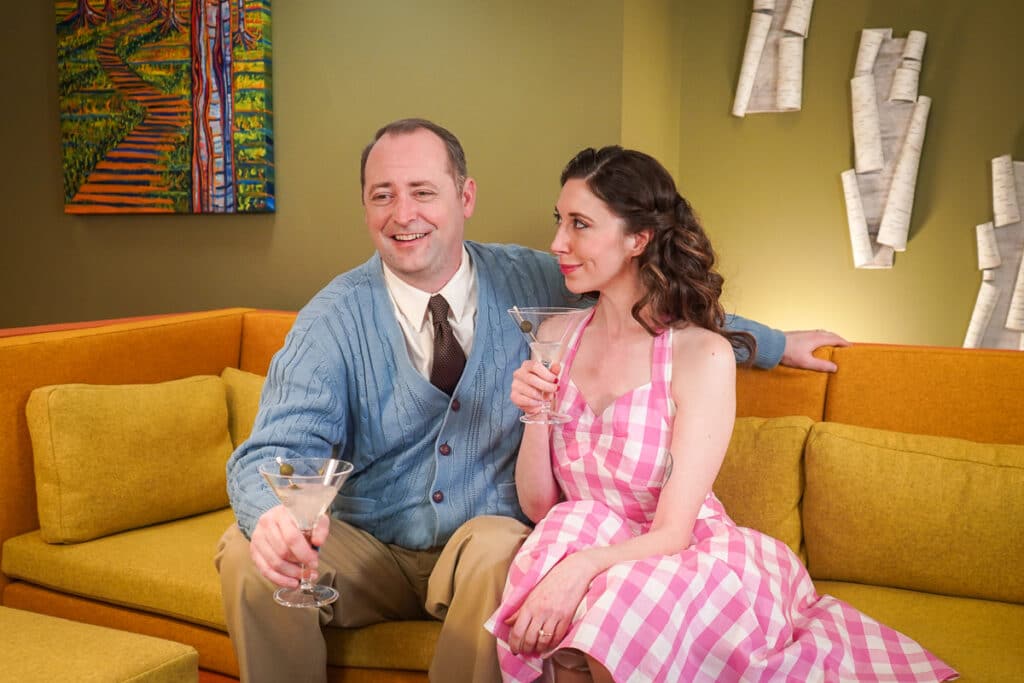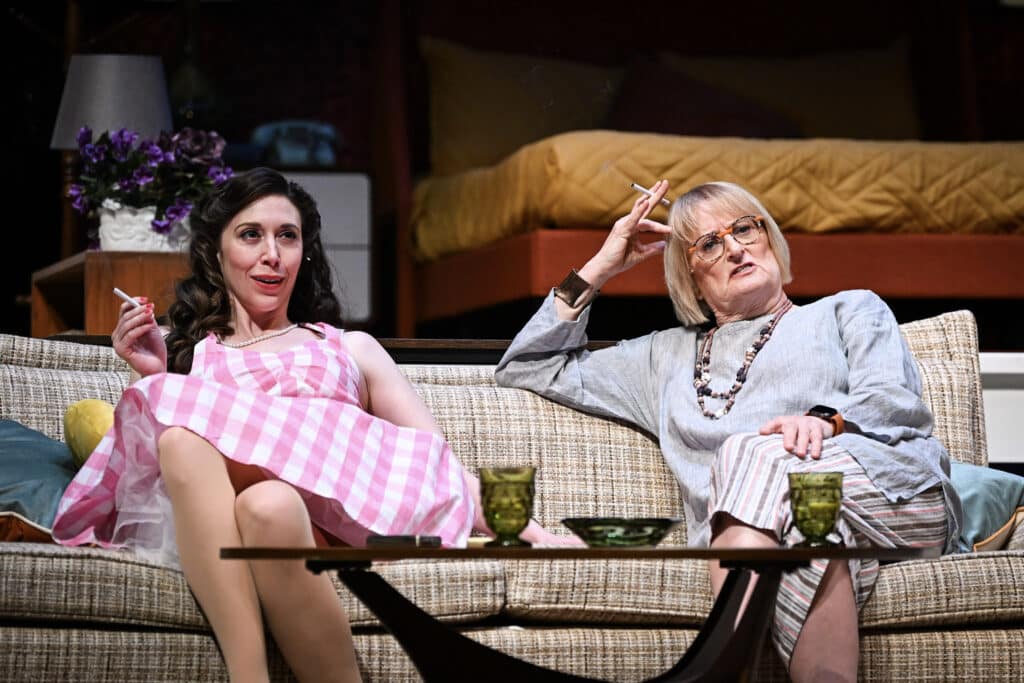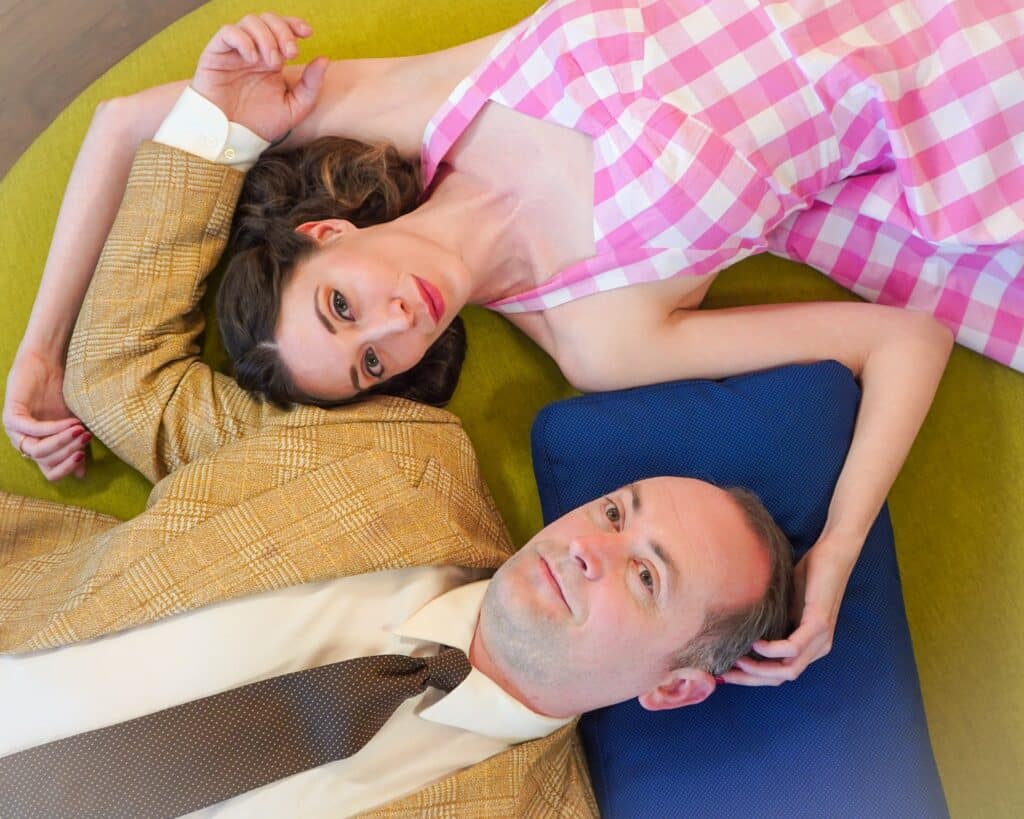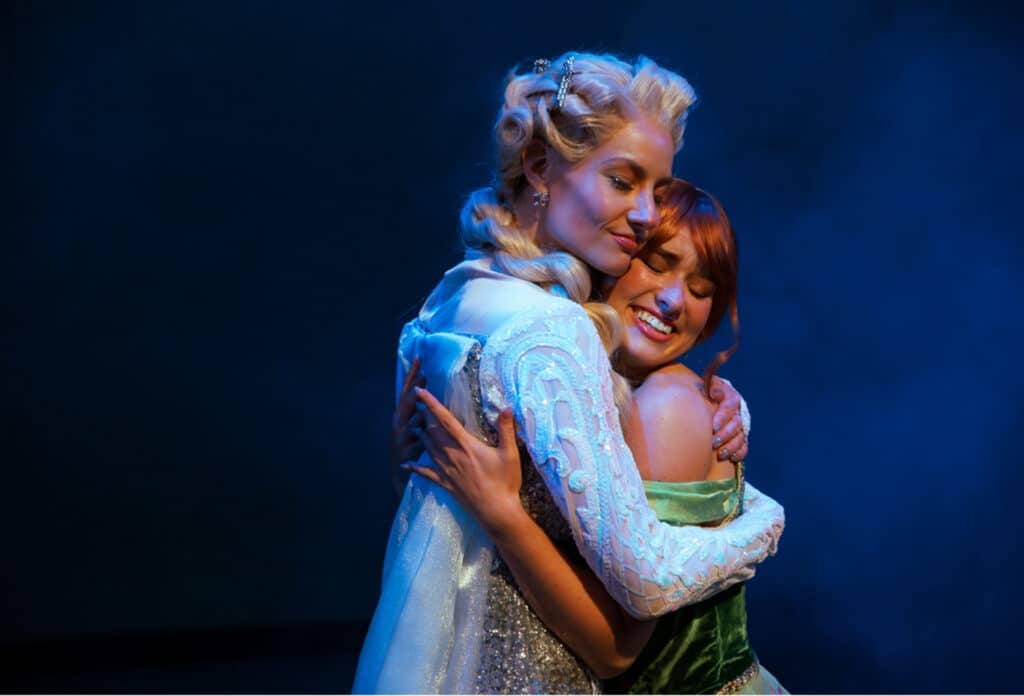
For many people, except for baby boomers, their only link to the 1950s is the saccharine view of idealized family life in the cable rerun shows such as “Leave it to Beaver,” “ Father Knows Best,” “Donna Reed,” and “Make Room for Daddy.”
These depictions of fairy tale, happily-ever-after lives, portrayed perfectly coiffed women, dressed in cinched waist full-skirted dresses and high heels, who spent hours every day cleaning every nook and cranny of their impossibly neat “dolls’ houses.”
Always ready to greet their husbands with a cocktail and slippers in hand, and at the ready with a well-cooked meal bubbling on the stove and pies baking in the oven, these wives were supposedly all blissfully happy and ready to turn any problems with the children over to their husbands, saying, “Wait until your father gets home.”
British playwright Laura Wade turns the mythology of this “idyllic” life upside down in her dark comedy “Home I’m Darling,” which opened on Friday night at the Duluth Playhouse.
Wade’s modern-day couple, Judy and Johnny (Jess Hughes and Sean Naughton), have decided to embrace the nostalgic 1950s lifestyle, right down to their carefully curated furniture, ancient appliances, tacky decor, and most of all, their “traditional wife” lifestyle.

Hughes convincingly plays the role of domestic goddess Judy, decked out gorgeously in her period costumes, yet showing how she is torn between living the “simpler” stay-at-home life and her former workday corporate world, where she was a successful team leader.
This complex character comes across in turns as funny, joyful, and in abject despair. Hughes captures the full range of Judy’s character from start to finish.

Without making Judy a total neurotic for her lifestyle choices, Hughes manages to walk the tightrope of playing a woman who is off the rails at times, to one who is truly looking for a lifestyle that makes her happy. Landing, however, in the 50s, in what was certainly a bleak time period, particularly for many women, is disastrous.
Johnny could be the villain of the piece, and while he truly loves his wife, he has become disillusioned with the hollowness of their shallow role-playing. Finding it impossible to maintain the charade and the financial constraints this lifestyle has placed on their lives, when Judy has given up her higher-paying job, the cracks are beginning to show in the couple’s relationship.
Naughton’s finely tuned performance and nuanced acting often make the audience sympathetic for his character. He portrays well what could be every husband’s dream lifestyle, turning into a dust-free nightmare of hidden secrets, disillusionment, and false protestations about how happy he is.
Real-life husband and wife, Sean Naughton and Jess Hughes have tremendous chemistry and an obvious ease in playing off each other, certainly recognizing how elements of their own relationship and shared views of marriage can inform the way they play these two central characters. [Read the artist profile/preview. Husband and wife play husband and wife in “Home, I’m Darling”]
The two are backed up by a tremendous supporting cast of actors. Playing the couple’s friends whose marriage is also not what it seems. Alyson Enderle (Fran) and Zachary Stofer (Marcus) are impressive as additional reflections of the dynamics of relationships of today.

Portraying Johnny’s boss Alex, Olivia Nelson is a confident actress who clearly presents the ideal foil and contrast as a modern-day working woman to Judy’s cloned fifties version of a Stepford wife.
While she is not onstage long, Julie Ahasay as Sylvia, Judy’s mother, steals the show at one point. Having grown up in the fifties and living the commune life in the 60s, Sylvia has the complete opposite view from Judy that fifties’ life was so perfect . She asserts that it is not a time period that anyone should want to return to, especially women.
Ahasay’s impassioned pivotal act two speech, when she pops the balloon of the nostalgic notion that the fifties were so great, garnered spontaneous applause from the audience.

Sylvia knows the reality of the fifties, and says, “. . . the intolerance, try being anything other than a straight white man and see if you still think it’s utopia . . .no abortion, no birth control. No help anywhere. . .’Nostalgia ain’t what it used to be, that’s the joke, isn’t it?’”
Director Mary Fox and her creative team are on point in creating this world that some in the audience lived through. Some younger members of the audience may have had their “rose-colored glasses” perspectives of what life was like in the idealized sitcom world that led, for many, to cloistered, unhappy, and unfulfilled lives.
Curtis Phillips’ set creates a colorful fifties’ ambiance, at times more idealized and reminiscent of today’s mid-century modern style. The set became almost an additional character, creating a distant view of the past, blurred by the reality of how the inhabitants inside were actually surviving.
Naomi Christenson’s costumes were integral to the show’s period look and well contrasted by her choices for the “modern day” characters. Judy’s outfits were a kaleidoscope of colors and a potpourri of patterns.
Hughes did her costume changes off to the side in view of the audience, emphasizing that these clothes were her “real life” costumes, that she would put on and take off to convince others of her perfect life.
“Home I’m Darling” had many comic moments, particularly early in the show. The play’s complex themes, however, make it more of a “dramedy,” examining the expectations of roles in marriage, feminism, gender, societal expectations, and the dynamics of the workplace, including often unreported sexual harassment.
While these themes were certainly prevalent and important in the 1950s, they were often swept under the rug. Sadly, many of these same issues are present in modern-day society, and while they are, to a degree, more out in the open, they still are devastating to many today.
Wade’s thought-provoking play shows the perils of this movement continuing today, with thousands of TikTok and other social media sites portraying everything from period household cleaning tips, to recipes, to places to buy fifties ”frocks,” to show the idealization of a time that Sylvia in the play aptly describes as a “cartoon.”
“Home I’m Darling” was a bold choice this season for the Playhouse. It is sure to elicit many post-show discussions over coffee and dessert, maybe even a Judy-style chocolate chiffon cake that she so proudly serves to her guests.
Information for “Home I’m Darling”
May 23-June 1
Norshor Theater
211 E Superior St.
Duluth, MN 55802
More info/tickets at Duluth Playhouse presents Home, I’m Darling









